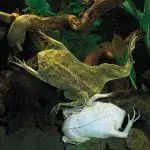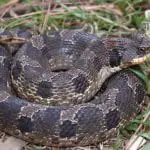Scientific Facts
| Common Name | Eastern Indigo Snake |
| Scientific Name | Drymarchon Couperin |
| Geographical Range | Regions in the United States |
| Habitat | Flatwoods, dry glades, hammocks, stream bottoms, riparian thickets, cane fields, in sandy hills or in sandy soils |
| Lifespan | Up to 26 years in captivity |
| Size | Male: 3.9-7.7 ft (1.2–2.36 m) Female: |
| Weight | Male: 1.6-9.9 lb (0.72–4.5 kg) Female: |
| Color | blue-black dorsal and lateral scales; tan to reddish-orange hues of the cheeks, chin, and throat |
Physical Description
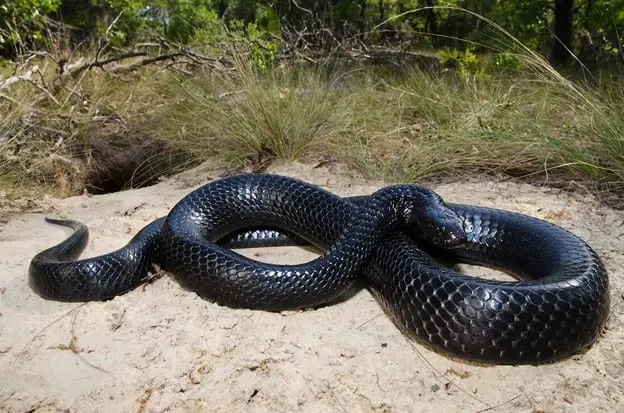
The Eastern Indigo Snake or commonly known as the blue indigo snake, blue gopher snake, and blue bull snake, and the black snake has a scientific name, Drymarchon couperi which means “lord of the forest.” It is a non-venomous snake that is characterized by its color of blue-black dorsal and lateral scales with hints of tan to reddish-orange hues of the cheeks, chin, and throat. This is considered to be one of the longest smooth-scaled skin in the United States. They have a unique skin color because at first sight the dark and black scale color will be seen, but if they are under the sun or light exposure, you’ll see that their skin has blueish tones.
Geographical Range
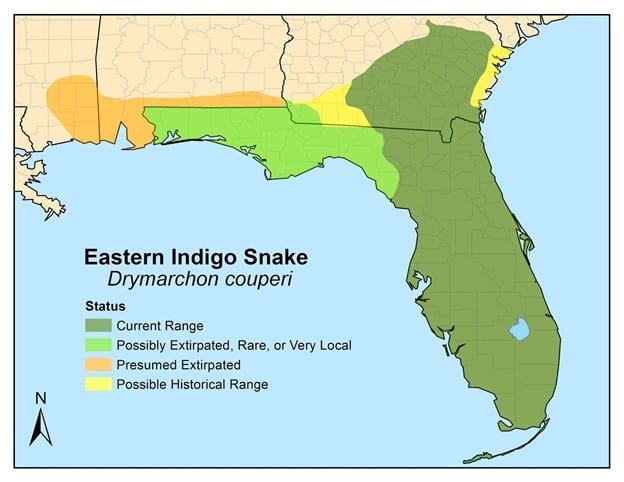
It is a native species to the eastern United States that ranges its population from Florida to The species is native to the eastern United States. It is the longest native snake species in the west to southern Alabama, southeastern Mississippi throughout southwestern South Carolina. Even though you would take it anywhere, it can definitely survive because of its hardy characteristics.
Habitat
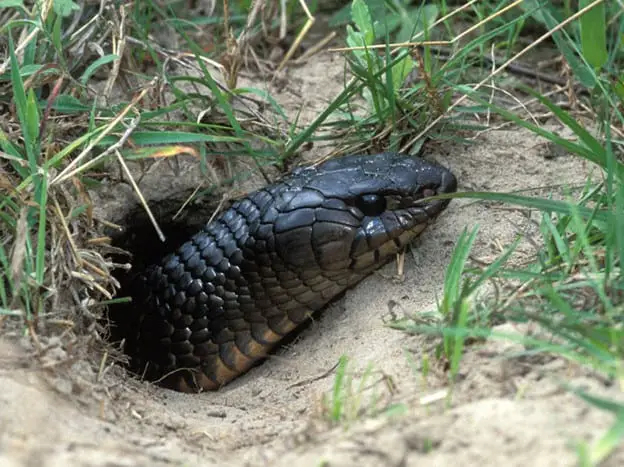
They are most abundant in Flatwoods, dry glades, hammocks, stream bottoms, riparian thickets, cane fields, in sandy hills or in sandy soils. Their habitat varies in different seasons and during spring through fall, they travel in upland or sandhill communities. In winter, they stay in gopher tortoise’s burrow and during the warm days of summer, they stay nearby wetlands.
Behavior
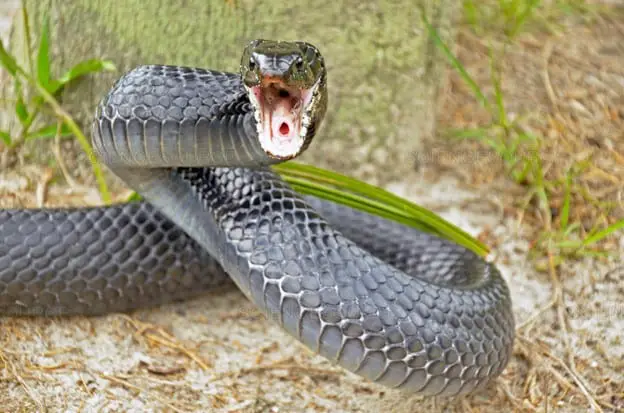
These snakes have an active lifestyle in daytime finding their prey. As a defense mechanism, if threatened, they hiss loudly, vibrate their tail, and flattens their neck and body vertically though seldom bites. They make use of their powerful and muscular jaws to kill their prey, or they beat it to death instead of a constricting method.
These snakes also bite but on rare occasions only especially if someone would take them harshly. They also tend to wrap around their bodies into their prey if it’s large enough or to humans hands if they feel threatened.
Size and Weight
The longest known species of Eastern Indigo snake that was recorded measured 9.2 ft (2.8 m) from head to tail. Males tend to slightly grow larger than females. The average size of males ranges from 3.9-7.7 ft (1.2–2.36 m) with a total weight of 1.6-9.9 lb (0.72–4.5 kg) while the average size of females ranges from 3.6–6.6 ft (1.1–2 m) with a total weight of 3.3 lb (1.5 kg). If the snake reaches a length of about 8.5 ft (2.6 m), their weight will range from 5 kg (11 lb).
Lifespan
Experts have a hard time knowing the average lifespan of these species in the wild, but the longest-lived Eastern Indigo snake in captivity is about26 years.
Eating Habits
Like all reptiles, they are also carnivorous. They tend to eat all living creatures as long as they can easily overpower it. In the wild, they make sure to kill their prey before placing it into their mouth while in captivity, breeders would always give them dead prey to ensure that they will not be injured if the prey would fight for their lives. The young’s would have the same diet but with smaller prey. They would usually wrap around their bodies into their prey’s body so that it will be easier for them to eat even though their prey is still fighting for their lives.
Breeding and Reproduction
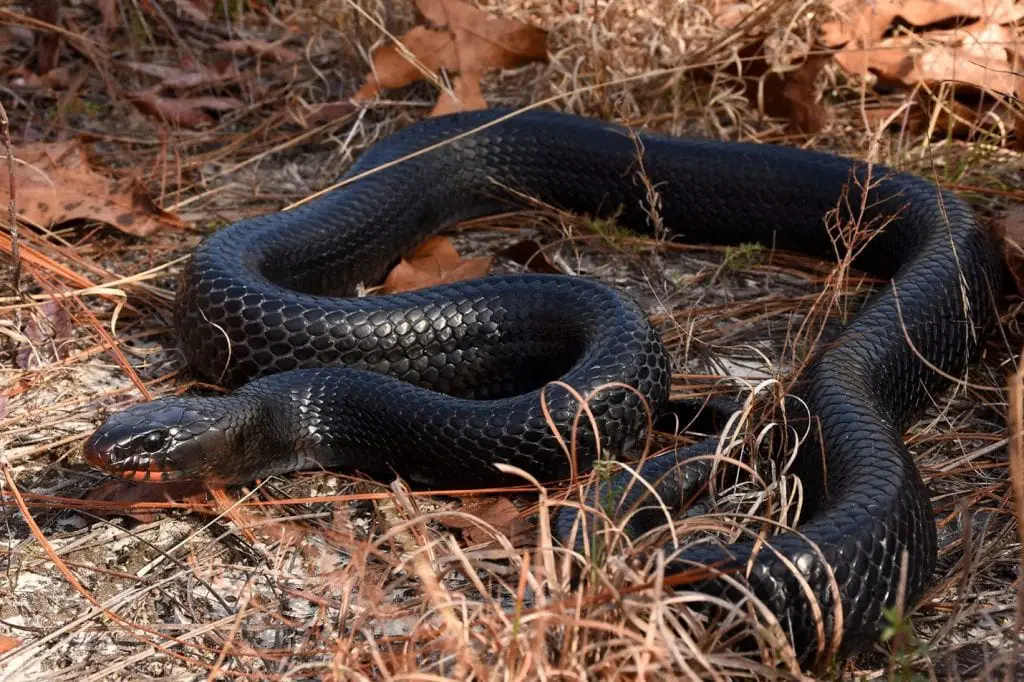
The breeding season takes place at the peak of the winter season or from October to February where the temperature is around 50 to 60 degrees Fahrenheit. This is quite unusual for reptiles because for some, this temperature is too cool, that is why they hibernate. The mating happens in the sandhills.
For an average of four months, except that the female will lay about 4-12 large eggs with a 3 in. (75 mm) length, with an elongated cream-colored granular egg surface. Most likely, they lay their eggs in gopher tortoise’s burrows. Since they produce large eggs, the hatchlings are also large with an average size and weight of 40 cm (16 in.) and about (50 g) 2.5 oz.
Shedding Process

During the shedding process, it is not advisable to handle them because of their temperament. Beginner breeder would see the snake’s condition before shedding alarming because of their dull skin and blue eyes, but these are just normal, it will go back to its normal condition after 1-2 days and expect that the shedding process will take place. It is important to observe the way they shed skin, it should be removed all at once. If the skin is being removed in patches then there is something wrong with the temperature and humidity level.
To make sure that there will be no problem in the shedding process, make sure that your pet is always hydrated so that there will be no problem in excreting a lymphatic fluid that will aid in the shedding process. Make sure that their environment is also moist by spraying water on the sides of their tank. Once the skin has been removed, take it out from the tank immediately so as not to cause bacterial buildup.
Common Disease / Illnesses
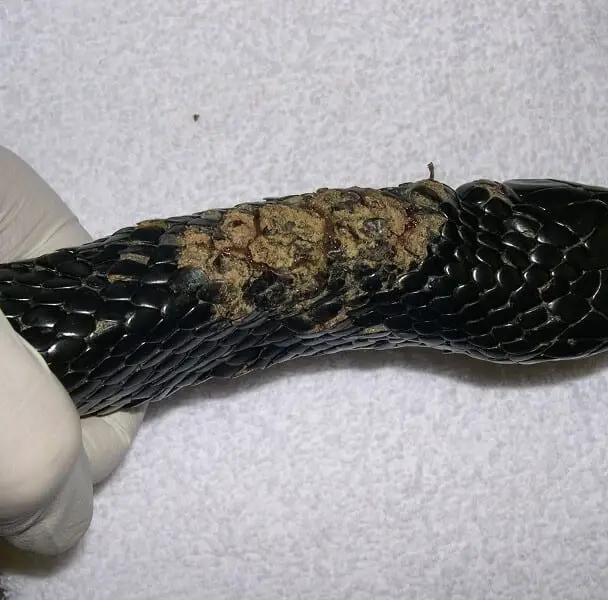
Pneumonia and Respiratory Issues
Like humans, snakes are also prone to pneumonia and respiratory issues if the temperature that they are in is not optimal. It is also important to balance the right moisture and dryness on their tank. There are times when they need moist, especially if they are about to shed their skin, but most of the times they need a dry environment.
Pneumonia and respiratory issues can be detected if you notice that your pet has nasal discharge. Once you see that there is nasal discharge, take it immediately to the veterinarian so that they could give its first aid because if not treated accordingly, your pet will have hard breathing and its fatal.
Parasites Infestations
Parasites infestations can be avoided if your pet’s housing is secured with a cover or screen that will still give proper ventilation. Avoid taking them out too often unless you would clean their tank and make sure that whenever you would touch or handle them, your hands are clean and sanitized. Parasite infestations are not fatal, but this is a clear indication that their environment is unhygienic.
Parasites love to thrive in a dirty, smelly, and chaotic environment. As much as possible, clean their tank at least once a week, especially if they are known to defecate more often. Aside from cleaning their housing, bathe them often will easily shoo away these parasites.
Blister Disease
These snakes should always be in a dry substrate most of the time. If they are too exposed to wet or damp conditions, their skin is susceptible to different skin conditions such as blister disease or it may cause lesions that may cause septicemia and other skin infections that may be fatal if not treated immediately.
When you handle your snake, observe their skin carefully, especially in the ventral side to check if there are blisters. If you notice blisters, you can apply some ointments that are suitable for snake’s skin or better yet take it to a veterinarian so that they could apply or treat it with antibiotics. Before taking it back to its housing, make sure that it is clean, dry and sanitized.
Anorexia
There are a couple of reasons why your snake refuses to eat, they are not active when the temperature is too high that is why they also don’t have an appetite for eating and when they are about to shed their skin. If you notice that the environment for them is just optimal and they are not exhibiting signs that they are about to shed skin there is a possibility that their lack of appetite in eating could mean something else.
Aside from lack of appetite in eating, anorexia is also characterized by difficulty swallowing and digesting food mostly that food that is hairy or feathery, they tend to vomit what they placed on their mouth and then swallowing it again. In this case, it is advisable to seek medical attention because it could mean something serious.
Egg Binding
If you are breeding in captivity, it is important to observe each stage from mating to reproduction so as not to cause any problems, especially when it is about time for them to lay eggs. The most common problem that snakes encounter in giving birth is the egg binding where the egg is stuck on the female’s organ if it is too big. It may be difficult for you to check if there are stuck eggs that is why you may need to ask medical assistance so that they could check the health situation of the snake after giving birth.
Egg binding is fatal because if the egg just stays on their organs, it may cause sepsis that is extremely fatal. It would also cause different irritations making your pet aggressive. This condition can’t be avoided, but through observation about the life processes your snake undergoes for sure, you would be able to maintain a healthy lifestyle of your pet.
Preventing Illnesses
The common disease or illnesses of snakes can be treated when attended to immediately. Once you see changes in their physical appearance and on their behavior, you must be able to determine if it needs medical attention or the factors that threaten their health is controllable. Most of the diseases of snakes would boil down to how their environment gives them comfort. If the environment where they are in is not conducive, there is a possibility that your pet will be stressed leading to a certain health condition but if their environment promotes comfort, mostly likely your pet will be happy and healthy.
Captive Breeding
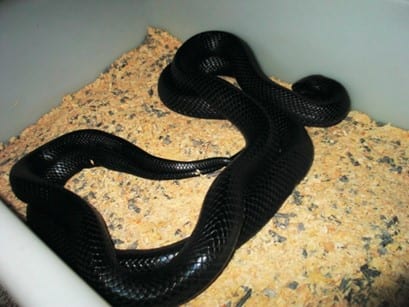
Since this reptile is under a protected status, you can still own one with a proper permit, and depending on your location. There is a possibility of obtaining one if you are anywhere from the USA. There are a lot of things to consider in getting one in captivity, proper housing with substrate and accessories, food, lighting, temperature and way of handling.
Breeders consider Eastern Indigo Snake as a pet because of its unique appearance and nonaggressive personality. No doubt, these types of snakes are the usual pets being used in magic or circus performances. It is advisable to start with hatchlings so that it can be tamed easily. You can start with at least two snakes of the same species.
How to Care Reptile as a Pet?
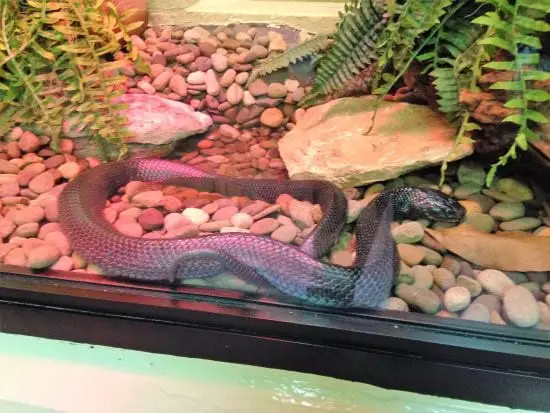
Housing
These snakes are alert, especially if they are on a new environment, but later on, they’ll become shy. If you prefer housing two snakes, you can use 20-30 gallon capacity, but as they grow towards maturity you may be needing to transfer them in a 125-gallon capacity. Make sure that they can move freely.
They love to climb, burrow, and hide that is why their tank should be equipped with a box where they can hide, enough substrate where they can burrow and branches or logs where they can climb. There should be at least 3 areas, dry, warm and damp or wet.
Light and Temperature
These snakes have an unusual comfortability in the cold temperature of about 70-78 degrees Fahrenheit in captivity, but during a couple of hours within a day, it still needs warm temperature of about 85 degrees Fahrenheit where it can bask. The use of an incandescent bulb is just enough to keep their tank warm for a couple of hours a day.
Food
There is no specific diet for them as long as they can easily kill their prey, but in captivity, it is already a practice to give them pre-killed or frozen prey to avoid harming your pet when live prey is thrown in their housing. Since they have a fast metabolism, you may feed them every 10 days. They can be fed in large amounts when they are still young so that they can grow quickly but when they reach adolescent, the timing and amount of food should be observed to lower the risk of obesity and overweight.
Water
Clean and freshwater should be given always. When your pet defecates, it can’t be avoided that there will be no particles that will be placed in the water. These types of snakes will sense if their water is clean or not, they will not drink if the water in their bowl is stale. So to ensure proper hydration make sure that always drink fresh water.
Sound and Vibration
Sounds and vibrations that they feel may become a stressor to your pet. Some vibrations that may cause them stress are closing of the doors, recreational equipment sounds, and knocking on their housing’s glass. It is important to place them in a room or in a place in your house where these factors can be avoided so as not to bring out the aggressive behavior in them.
Substrate and Accessories
The excellent substrate for their tank is aspen chips, bark shards, cypress or fir together with fine sand. They also need to have trunks or logs where they can climb to bask. You also need to properly place the basin or bowl where you can place their water for soaking or drinking. It is advisable to at least provide these snakes with an environment that is just like their natural habitat.
Cleanliness
These snakes release watery waste frequently, that is why you need to constantly clean their tank to avoid the smell and build-up of bacteria. Make sure that the water will not overflow because if it overflows, the substrate will be damp and their skin will soak making it prone to skin diseases and fungal infections. Experts would say that of they are exposed to their waste for so long, it could also immediately lead to these skin diseases and fungal infections.
Availability – Where to Get One
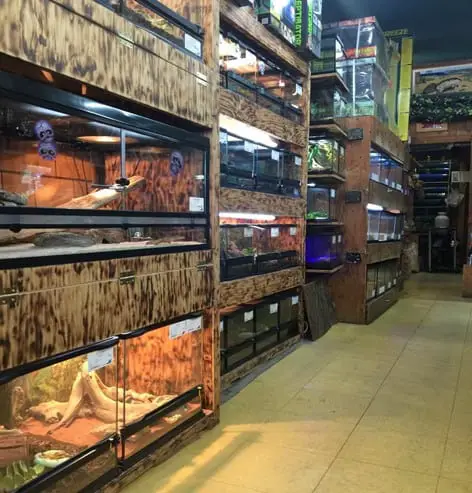
Even though this species is considered as an endangered reptile, it is still possible to obtain it in captivity as long as it is properly documented. You have to pay for the permit so that everything is legal. Eastern Indigo snake can be found in some pet shops in the USA, especially in Florida, Alabama and South Carolina. If you are a different country, there are some collectors that sell on the internet pet shops but make sure that the snake that they are selling has proper documents.
Some breeders who take it into captivity do not avail it from pet shops but they would usually hunt these reptiles in the wild. Sometimes, the way how they hunt these snakes are quite abusive wherein they tend to hurt it just to claim it that is why wounds, scratches and bruises can’t be avoided if they are taken from their natural environment.
Threats and Conservation Status
Humans are considered the greatest threat to these snakes. Some of them are taken out from their natural habitat for pet trades, personal collections, and for food and clothing industry. There are also hunters who gasses their burrows if they were mistaken as rattlesnakes. They tend to be aggressive when they see a running vehicle that is why instead of moving they stay in the middle of the road in hopes that they’ll be able to fight that is why they are oftentimes runoff by vehicles.
Some places such as Georgia and Florida declared this species as threatened due to loss of natural habitat. Nowadays, they are listed on the threatened species that is why anyone caught killing or taking it into captivity without legal documents may face high fines or worse, jail terms. There are some private sectors that would take it into captivity for breeding and reproduction purposes to increase their population more by taking their offspring’s in the wild.
Facts about Eastern Indigo Snake
- They can be included on the list of gentle giants because they may grow in a large size, but since they do not have venom, they are not a threat to humans just handle them properly.
- They are most active during the winter season where most other snake species hibernate.
- The strength of their muscles and jaws are their defense mechanism to kill their prey and possible predators.
- Even though they prefer cold temperature, they still find time to bask at least a few hours in the morning.
- An indication of a healthy forest is when there are still sightings of Eastern Indigo Snake
FAQ Section
Is the eastern indigo snake dangerous or venomous?
Eastern Indigo Snake is harmless because it does not have venom. They bite their predator or other snakes during mating competitions. When threatened by humans, they may show signs of aggressiveness such as biting that may cause trauma.
How do you distinguish the eastern indigo snake?
They can be easily identified through the appearance of their skin that is glossy and colored blue-black throughout their body, and their cheeks, chin, and throat have a reddish-orange coloration.
How do they eat and kill their prey?
They are not like the other snakes that constrict their prey until death, they make use of their powerful jaw to consume their prey starting on the head first.
Do they get bitten when they eat rattlesnakes or other venomous snakes?
They are known to prey on smaller living creatures, including venomous snakes such as rattleskin. Sometimes they are bitten by rattlesnakes but good thing they are immune with its venom.
Are they thriving in the big territory?
Based on different studies conducted, they have a large territory on the wild. Their territory can be as wide as 3,000 acres (1,600 ha), but on average they have a 22 km (13 miles). They are territorial, they used to own any burrows that are not intended for them.
Is it normal for a snake to eat another kind of their species?
There are species of snakes that eat the eggs of other snakes, but there are only rare snakes such as Eastern Indigo snake that has the ability to eat matured snaked that is why they are called ophiophages or snake-eaters.
How often does Eastern Indigo shed their skin?
Expect that as your pet grows, the shedding process is more often about 2-3 times a year, but as soon as they reach the maturity stage the shedding process slows down into once a year.
Do Eastern Indigo snakes make good pets?
They are one of the snake species that are popular when it comes to a pet in captivity because they are not aggressive unless threatened and that they are not picky when it comes to food because they can anything but it is also advisable to eat the food that can give them nutrients.
Can a multiple Eastern Indigo snake stay in one housing?
At least two Eastern Indigo snakes can stay in one tank preferably a male and a female if you want to breed just make sure that their housing is large enough so that they can move, climb and spread out freely. If their tank is too small they might have some health problems and there is a possibility that they will become aggressive.
Is it still allowed to take them into captivity?
Even though they are now on the list of threatened species, you can still take good care of them as pets in captivity but most regions in the United States requires a permit. They would also advise you to breed to add up into their population.
How does it survive in the harsh weather conditions of winter?
This snake is one of the reptiles that have the ability to stay active during the harsh condition of the winter season. It usually have their prey in burrows where other reptiles are hibernating.
How long can they survive without eating?
They can survive for about 2 weeks straight without food on their stomach but make sure to give them a large amount of food during the next feeding session. Like other reptiles, they can survive longer if they have water to drink.
What is the importance of basking to these reptiles?
Basking helps them store enough heat in their bodies to withstand the cold environment at night. If you would observe, they love to back after eating because heat exposure helps them digest their food intake faster. Aside from these benefits they get from basking, heat exposure also sanitizes their skin to avoid skin diseases that they can get from damp conditions.

